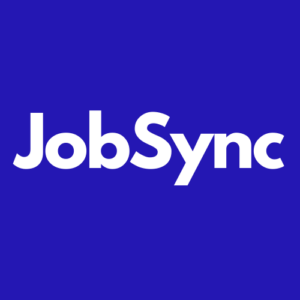
Dr. Solange Charas, human capital consulting expert and the Founder of HCMoneyball, explains the importance of good human capital management and why practitioners must join the dots between their talent initiatives and the company’s financial performance to get the ultimate ROI from their human capital investments.
Human capital management is about maximizing the potential and value of every employee within an organization. More than recruiting, retaining, and training the right people, it’s the art of adding value to employees so they can deliver the best results.
The key question is, can we see the value of that effort in investment returns?
We sat down with Solange Charas, PhD., Founder and CEO of HCMoneyball, to find out what making the most of your workforce means to the bottom line.
You often discuss the “human capital return on investment.” Can you explain this concept and why it’s so important right now?
Business operators don’t think in terms of investing in people as investing in an asset. They think of it as a sunk cost, a necessary evil. But an awesome thing happened a couple of years ago when the Securities and Exchange Commission said that human capital is not an expense but an investment in an intangible asset. That’s an entirely different mindset, and it triggers two new ways of thinking.
First, when we reclassify human capital as an investment, we automatically think of returns. We have an obligation to quantify and show a return on that investment for stakeholders, and we need to be able to better manage those investments to generate that return.
Second is the understanding that the vast majority of what makes companies valuable are their intangible assets. Intangible assets grew from just 15% of the S&P 500 market valuation in 1975 to 90% in 2020. Our economy has shifted from companies like GM, where they produce cars, or Intel, where they produce chips, to companies like Google and Facebook, where the value is driven by intangible services, by creating networks you can’t touch. And what is human capital for an organization? It’s intangible. We can’t own humans. Our assets leave at night.
Human capital is a value driver, and being able to measure the return on our investments in human capital is going to become increasingly important for human capital practitioners to show our value to our stakeholders. HCROI—Human Capital Return on Investment—is the mother of all metrics that help organizations show the return on investment in human capital. Because when HCROI goes up, when you are better able to manage human capital performance, it directly impacts profitability.
This isn’t just about knowledge workers, is it? When we think about human capital, do we mean any person who participates in a business?
Absolutely. We consider the labor input into the business model. McDonald’s has a business model that cannot survive without labor. You need somebody to make those hamburgers and interact with the public.
I know that many businesses are trying to figure out how to shift their dependence on humans to deliver products and services, like using AI, and that’s brilliant because the available labor pool is shrinking. The age 65+ is the only part of the growing U.S. demographic population. Baby Boomers are retiring at a rate of 10,000 per day, and we don’t have enough people in the younger demographics to fill those open jobs. Smart companies are saying, ‘If I can’t find talent, I need to figure out how to fill the gap in the labor part of the business model.’
So that’s where our line of sight is—how do we help companies not only get talent but show from an impact perspective that they are effectively managing and deploying human capital in the organization to drive sustainable business outcomes?
How do you calculate Human Capital ROI? Is there a formula or methodology that organizations should follow?
The algorithm is revenue minus expenses adjusted for the total cost of [the] workforce. This is an economic indicator of the effectiveness and efficiency of investments in human capital—for every dollar we invest in our workforce, what is the adjusted profitability that’s coming back to the company? It’s easy to calculate, track over time, and correlate to other financial performance indicators.
Not everyone likes to do the math, so there’s a calculator on our website that will calculate HCROI and give you a sensitivity analysis so you can see the accretive impact on profitability if you improve HCROI by just 5%. We show you the opportunity to improve HCROI from a financial perspective. If improving HCROI by 5% generates $30 million more in profit, how much of the $30 million are you willing to invest to improve HCROI?
It helps human capital practitioners speak the language of finance.
Yes. HCROI is a profitability measure, and your CEO and CFO will understand this metric.
At the moment, a CHRO might go into a CEO’s office and say, “Our culture is not as strong as it used to be,” or “Our employee engagement has taken a hit,” and the CEO doesn’t know what to do with that. A CFO goes into the CEO’s office and says, “Our quick ratio is changing,” or “The inventory turnover ratio is not as good as it used to be.” The CEO understands what needs to be done because they know the financial impact of that kind of performance.
HCROI is a great first stab at having human capital professionals speak a language that financial people can understand. You can go into your CEO’s office and say, “Last year, HCROI was this, and this was our profitability. This year, our HCROI is higher or lower, translating into profitability because we use the same numbers to calculate both.” It connects the dots between what’s happening in human capital and what’s happening in the company’s financial performance, which is what executive management cares about.
Once practitioners know the HCROI, what can they do to increase it? How do they know whether to invest in retention programs or recruitment programs, for example?
The human capital function is complex and multivariate. There isn’t one thing that drives outcomes. It’s the interaction between getting good people, then training them, and then making sure that they have some type of experience that satisfies them so that they stay productive, they’re inspired, and they find purpose.
Is there a one-size-fits-all solution? No, that’s the art. You need to figure out what dials to turn to generate the best outcome for the organization regarding human capital productivity. It’s all about using analytics, not intuition, to improve people’s and team’s performance to drive value creation.
It’s interesting because we’re seeing a trend of companies making technology investments based on vanity metrics, and they don’t yet know how to translate these financial statements or determine whether they made the right investment.
There are lots of places to invest money: recruiting, learning and development, mobility, ERGs [employee resource groups]. So, when you make recommendations, you need to make sure they have both statistical and economic significance. I tell my students, “Don’t shoot squirrels; hunt elephants.” Make recommendations and changes to HR programs that will have the biggest bang for the buck.
I don’t necessarily mean a financial bang but an impact bang. What do employees want? Listen to your workforce and make decisions that will impact the majority of people, not the squeaky wheel, which is often what happens when we make decisions not based on data.
So when you think about these vanity technology platforms, articulate how you expect the organization to benefit, tied to some specific business outcome that will actually help propel the business forward and then use data to figure out whether you’re on the right track before review. Because if you’re going to invest dollars, invest dollars in a program that will generate value for the organization. And value is ultimately measured by HCROI. What’s the return on investment of every dollar that you invest in a program?
Curious to learn more about human capital ROI and how it supports HR and TA leaders to drive optimization in their talent acquisition and retention approaches? Watch the full webinar here: Maximizing Human Capital Investment for the Ultimate ROI.
If driving a 300 to 500% return on your hiring investments could help you achieve your hiring objectives, and therefore meaningfully impact your business’ HCROI, please ask us how we have helped other large enterprise employers do just that.


